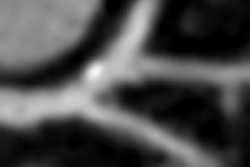Monday, November 28 | 3:10 p.m.-3:20 p.m. | SSE03-02 | Room S502AB
Ventricular size and function are important for diagnosing and managing patients with several conditions. Fortunately, dual-source CT (DSCT) has caught up to the reference standard, MRI, for the task, say researchers from the Medical University of South Carolina."Left ventricular [LV] hypertrophy has been demonstrated as an independent risk factor for adverse cardiovascular events and premature death," according to Dr. Paul Apfaltrer. In addition, "the assessment of right ventricular [RV] function and myocardial mass aids in the evaluation of patients with a variety of right-sided heart diseases, such as pulmonary artery hypertension [PAH], as well as classically left-sided heart diseases, such as coronary artery disease."
MRI is accurate and reproducible in the evaluation of LV and RV function and myocardial mass; however, as some patients are contraindicated for MRI, a second reliable modality such as coronary CT angiography is needed.
The study included 20 patients examined using 1.5-tesla cardiac MRI and contrast-enhanced, prospectively gated and triggered dual-source cardiac CT. At a mean heart rate of 66 beats per minute, all studies were of diagnostic quality, and all CT measurements of LV and RV function and mass correlated well with those from cardiac MRI, the researchers said. CT's mean effective dose was approximately 6.2 mSv.
CT accurately quantifies LV and RV function and myocardial mass compared with cardiac MR, at least in patients with normal sinus rhythm, the group concluded, though performance with faster heart rates and irregular sinus rhythm still needs to be investigated.
"The cardiac DSCT protocol allows for reliable assessment of RV and LV function and myocardial mass, while exposing patients to a lower radiation dose than with retrospective helical electrocardiogram-gated cardiac CT," Apfaltrer noted.




















